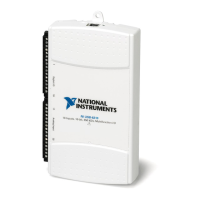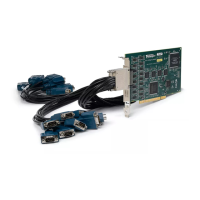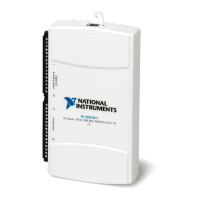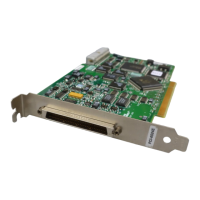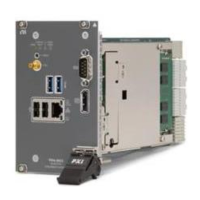Chapter 11 Isolation and Digital Isolators
NI USB-621x User Manual 11-2 ni.com
The isolated ground is an input to the USB-6215/6218 device. The user
must connect this ground to the ground of system being measured or
controlled. Refer to Chapter 5, Connecting AI Signals on the
USB-6210/6211 Devices, Chapter 6, Connecting AI Signals on the
USB-6215/6218 Devices, the Connecting Analog Output Signals section of
Chapter 7, Analog Output, the Connecting Digital I/O Signals section of
Chapter 8, Digital I/O, and the Connecting PFI Input Signals section of
Chapter 10, PFI, for more information.
Digital Isolation
The USB-6215/6218 uses digital isolators. Unlike analog isolators, digital
isolators do not introduce any analog error in the measurements taken by
the device. The A/D converter, used for analog input, is on the isolated side
of the device. The analog inputs are digitized before they are sent across the
isolation barrier. Similarly, the D/A converters, used for analog output, are
on the isolated side of the device.
Benefits of an Isolated DAQ Device
With isolation, engineers can safely measure a small signal in the presence
of a large common-mode voltage signal. Some advantages of isolation are
as follows:
• Improved rejection—Isolation increases the ability of the
measurement system to reject common-mode voltages.
Common-mode voltage is the signal that is present or “common” to
both the positive and negative input of a measurement device, but is not
part of the signal to be measured.
• Improved accuracy—Isolation improves measurement accuracy by
physically preventing ground loops. Ground loops, a common source
of error and noise, are the result of a measurement system having
multiple grounds at different potentials.
• Improved safety—Isolation creates an insulation barrier so you can
make floating measurements while protecting the USB host computer
against large transient voltage spikes.
Reducing Common-Mode Noise
Isolated products require an isolated power supply to deliver power to the
isolated side from the non-isolated side. Isolated power supplies work by
switching voltages through a transformer with high-speed transistors.
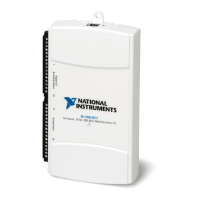
